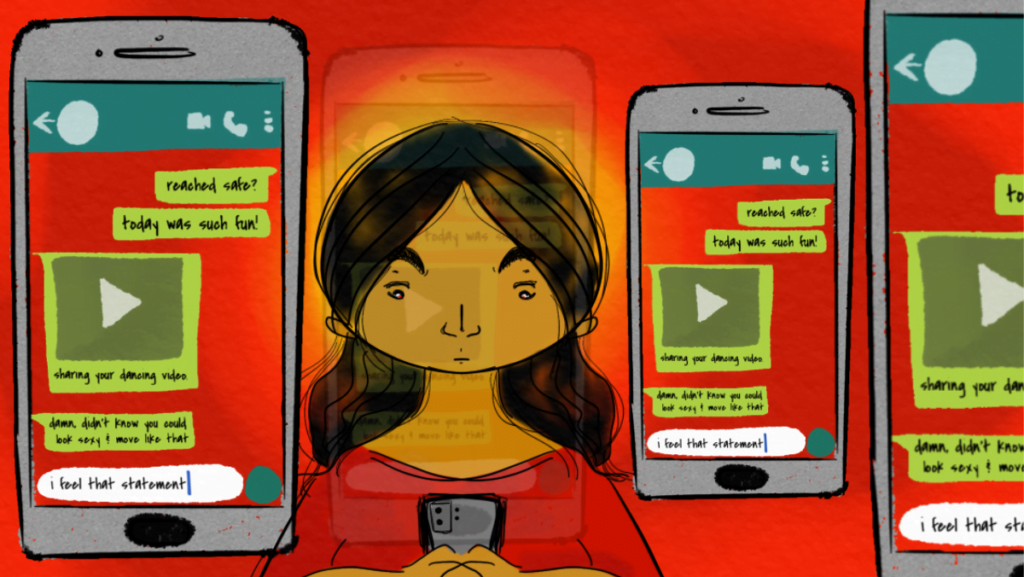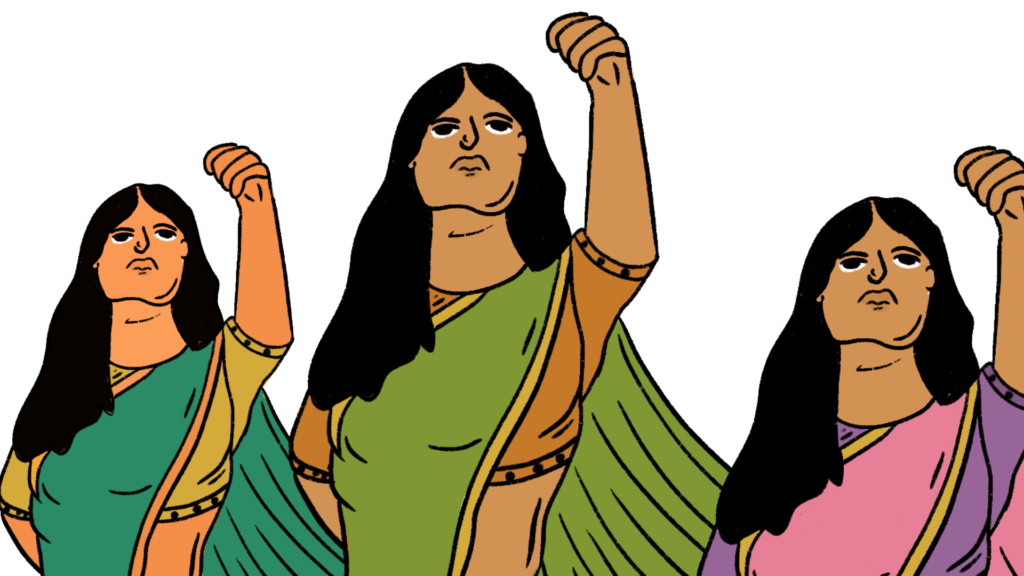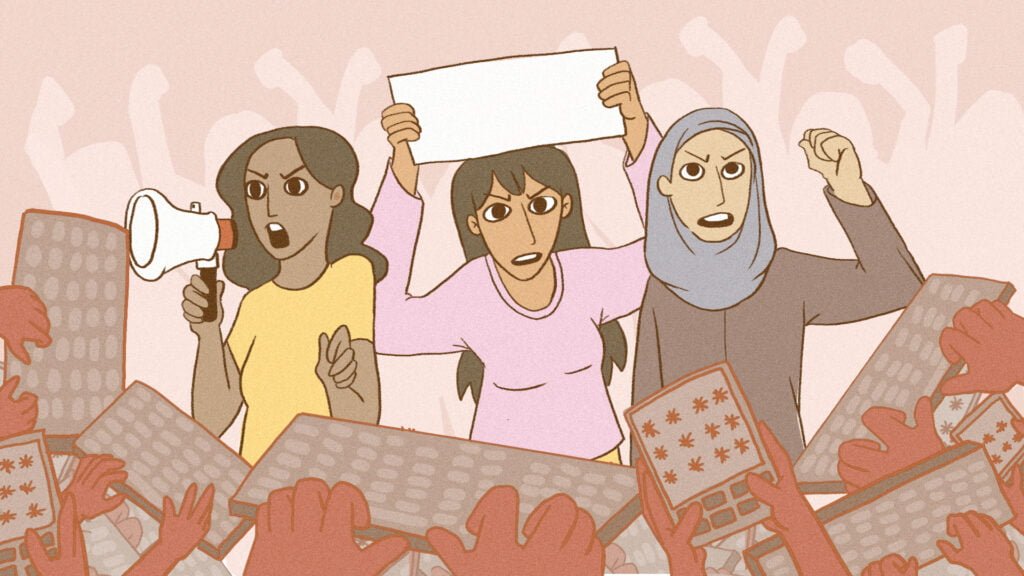A world association of Newspapers and News Publishers survey shows that 41% of women journalists have experienced verbal and/or physical sexual harassment in the workplace. This data makes the issue even more critical and ironic, as it is these women who are responsible for bringing up such news to light. Because it has been done so well, workplace harassment and overt sexism have become so common in the news media sector that they are no longer detected.
Stereotypical mindset as the basis of harassment
The harassment faced in the workplace is not just for the sake of sexual intentions or favours, it is rooted in the orthodox idea of female subjugation and hurting the fragile male egos. For a male colleague, one of the most employed ways to go ahead of an ambitious, competent female counterpart is harassment whether sexual or verbal. It reflects a deeper belief in the mentality that women are the weaker sex and are not meant to be working and achieving lofty career heights.
As for the basis of sexual harassment, one can have a look at the report generated by UNHRC which notes that “The abuse is inescapable and ubiquitous across the continuum of real and virtual worlds. The perpetrators are multiple, from state agents, politicians and non-state actors to sources, interviewees, employers and male journalists with whom the women are obliged to work.“
Also Read: Cyber harassment, Trolls, And Cancel Culture: A Lingering Threat To Women And Queer In Journalism
Workplace harassment extends from manifesting itself in the form of sexual innuendos to the lack of space for women to voice their opinions. A simple example is a female employee being picked by the male head to bring him coffee over several other male employees. This is also corroborated by the survey report conducted by the Khabar Lahariya of 20 district-level women journalists from the states of Uttar Pradesh, Madhya Pradesh, Bihar and Rajasthan which brought out the issue of how harassment is seen as a part of the job and not as something objectionable.

While sexual harassment is seen as a way to obstruct female journalists’ progress in the organisation, instances have been reported of it being used as a condition for promotion. This does not make the media industry very different from the film industry which sees several instances of casting couch.
Intersectionality and double disadvantage
In the first place, when it comes to journalism, statistical evidence shows that a majority of those who manage to reach the top spots are privileged either in terms of their caste, class or connections. The harassment and exploitation faced by female journalists are unfortunately directly related to their privileges. Thus, female journalists who come from more subordinate castes and classes are most vulnerable to the exploitation that they desire to uncover in their reports.
Also Read: More Female Journalists Ensure Better Feminist Perspectives In Journalism
The close-knit supporting nexus
One of the problems is the close working nexus of media houses, private agents, and political and government agencies that make it difficult for the oppressed ones to raise their voices effectively. Since it is workplace violence, it is related to the risk of unemployment, and sustenance in general. This further plunges women journalists into the vicious circle of exploitation.
What’s more, is the loss that the media industry and the general audience suffers in terms of loss of intellectual and creative contribution to the content generated. Another important factor is the control and power that private enterprises exert over media houses that have over time led to a decrease in the ethical standards and moral values being upheld, which plays an important role in how the employees are treated.
Also Read: Dalit Women Journalists’ Resistance Against The Caste Bias & Discrimination
Casual sexism
The most alarming aspects of sexist behaviour are systemic and normalised to the point where male panellists frequently make overtly sexist comments, phoney jokes, or act domineering toward the female anchor during prime-time debates. Despite the fact that there are many women moderating these discussions, including on National News networks, many journalists have expressed worry about the participants’ casual sexism. It wouldn’t even come as a surprise to the audience if the male panellists behave in a condescending manner or how women anchors are assumed to go “soft” on issues that demand immediate action.

Stereotyped perceptions of abilities
There is blatant sexism that becomes visible when it comes to women reporters who work in the field. While the situation is changing now and one can see female reporters reporting on dangerous and sensitive issues, the majority of reporters are still men. Women journalists’ unions have argued for better facilities so that they can be at par with men when it comes to this, this demand includes various facilities from the availability of proper sanitation facilities, and maternity benefits to transport support on night shifts.
A famed newspaper brand like The Indian Express did not have transport or restroom facilities for women till 1992, which also happened after it was petitioned. But now, we see these facilities being provided for by many media houses. Women pressure groups have been successful in some other instances as well. As a senior art critic, Dnyaneshwar Nadkarni was fired from The Times of India because of his sexist behaviour.

Let’s just think back, how many female journalists have we seen writing analyses related to International Relations or Economics section? Now, compare this with female journalists writing about cooking tips, Bollywood or other such issues. This restriction of female journalists to soft issues does nothing but aggravates the issue.
Extension into digital and visual media
Another issue that is related to this, is how the content is presented. While news channels very casually use comic portrayals and catchy lines to attract the attention of audiences, it ends up making the issue look insensitive. Representation of issues related to sexism, domestic violence and sexual harassment in a comedic manner ends up contributing to its normalisation no matter what the objective is.
Moreover, when one talks about workspace for women journalists, one cannot restrict it to the physical workstation, it also includes the online space where they share their content and views. And lately, a lot of female journalists have been subjected to online trolling, hate comments or even rape threats if the audience disagrees with their views.
Also Read: Indian Men And Airlines: The Power Play Of Gender and Class
Where do we stand?
What is really concerning is that fellow workers especially senior employees and even women refrain from raising their voices staunchly against this. This can be seen in the case of the MeToo Campaign. While the campaign has been instrumental in bringing what goes on behind the cameras to light, numerous justifications and pathetic counter-arguments came to the front as to why these issues were not brought to the forefront earlier from complaining about not having enough evidence to act, to say that this is a stunt to divert attention from the film industry.

The issue of sexual harassment in the workplace and desensitization of sexist behaviour in media houses becomes pertinent as issues like these act as a discouragement for women from entering into the field and this will end up in underrepresentation of issues related to gender rights and justice. Looking into this issue becomes even more critical when one considers the impact that media has on the general audience. Therefore, devising and executing more precise gender-specific guidelines and facilities is very important to ensure an egalitarian and safe work culture and space.
About the author(s)
Arya is an undergraduate student pursuing an Integrated Master's in Development Studies from the Indian Institute of Technology, Chennai. She completed her schooling in the humanities stream from Nagpur. Still hooked to teenage novels, she likes singing, dancing and loves talking. Intersectionality became her favourite word since the time she was introduced to it. Her major interests include adopting the intersectional feminist approach in studying other disciplines like Economics, Management, Development and interpretation of literature, films Etc.






What about false cases of sexual harassment, destroying men’s lives.